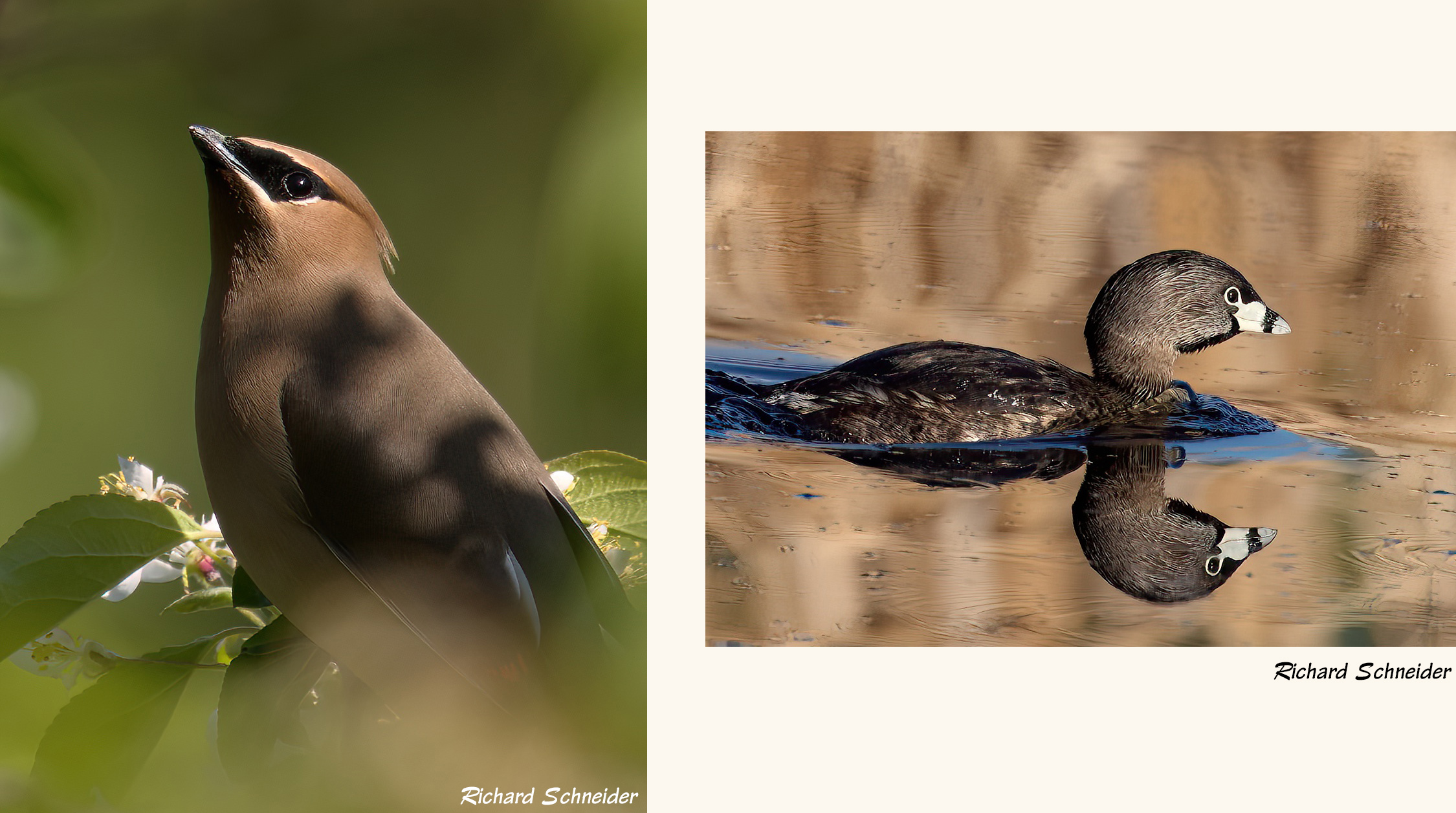Wildlife: Lighting
Light as a Compositional Element
To boost the appeal of your photos it is important to think about the lighting and to seek out the best conditions. The “golden” hour around dawn and dusk is ideal for nature photography because the long, soft shadows and red-shifted light add depth and interest to photographs. This is especially true for landscapes, but applies to wildlife photographs too.
The two photos below illustrate how complex lighting can make a scene more compelling, like adding spice to a bland soup. The light is flat in the first photo, making for a lackluster result. In the second photo, the interplay between light and shadow adds depth and detail and makes for an overall more visually stimulating image.

Sometimes it's possible to use lighting to draw attention to a subject. In the example below, a beam of sunlight acts like a spotlight to highlight the waxwing. Alternatively, you may be able to use reflected light to “paint” a scene in a unique way, thereby adding interest. Water is particularly amenable to this approach, as it will reflect the dominant colours of the surrounding landscape. In the example below, a pied-billed grebe swims through a sea of gold, created by the reflection of sunlight off a bed of dried cattails.

Lighting Challenges
Although the golden period has many desirable qualities, the intensity of light is low. Consequently, it can be difficult to achieve the shutter speeds needed to overcome subject movement and camera shake. You will usually be limited to relatively static subjects and your images will benefit from the use of a tripod. High ISO settings are generally necessary.
Midday light is not as flattering as the golden period, but that does not mean it's impossible to take good wildlife photos during the day. Strong light is in fact a necessity for capturing action shots. You also have increased maneuverability in the field because a tripod is generally not necessary (due to fast shutter speeds). To avoid harsh shadows within your subject when working under strong light, it is usually best to position yourself so that the sun is directly at your back when shooting. Side-lighting is best reserved for times when the sun is lower in the sky.
One thing to watch out for in bright light is excessive contrast, which can lead to exposure problems. For example, if your subject has any white patches, these are easily overexposed. Most cameras will highlight such overexposed spots by blinking them on and off, allowing you to apply exposure compensation to address the problem. The converse can also occur, where a bright background leads to underexposure of a dark-coloured subject. To remedy this problem, try to find a better background and then use exposure compensation to properly expose the subject (it's the priority).
Backlighting occurs when you are shooting into the sun, instead of having the sun on your back. It is challenging to work with this type of lighting, but it can deliver very interesting photos. Give it a try!
An inexpensive LED panel light can be helpful for photographing subjects in low-light conditions (e.g., mushrooms in a forest). Place the light on a mini tripod to achieve the directional lighting that works best for your scene.
